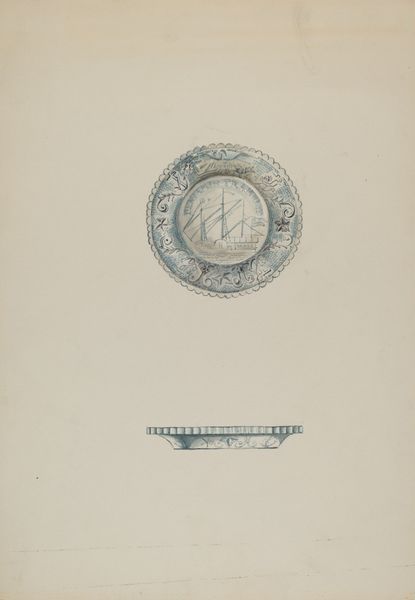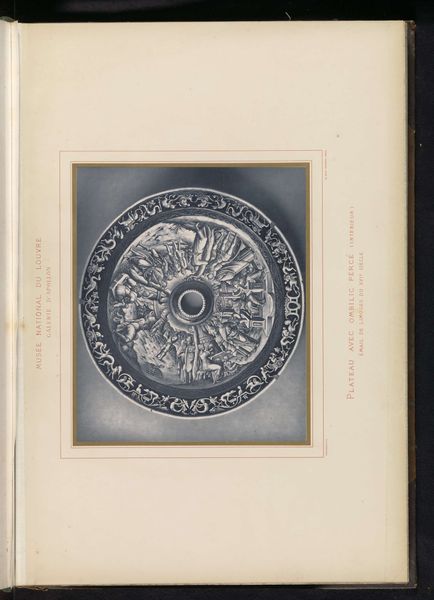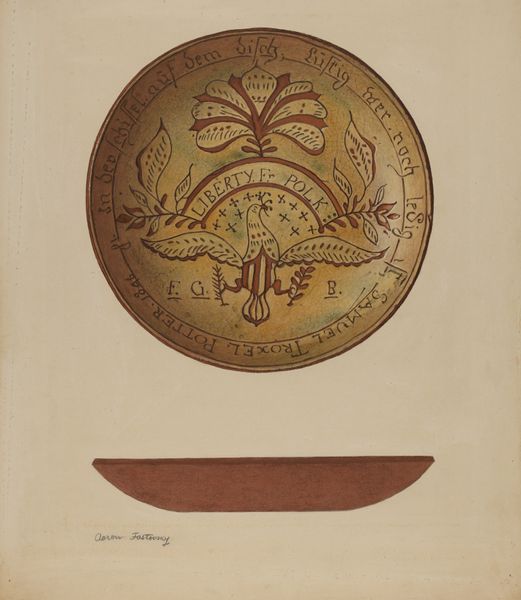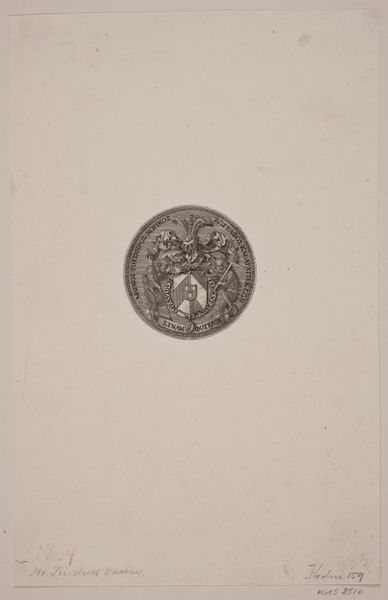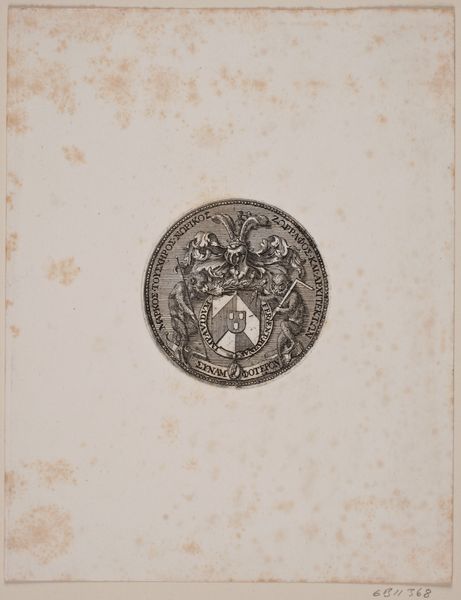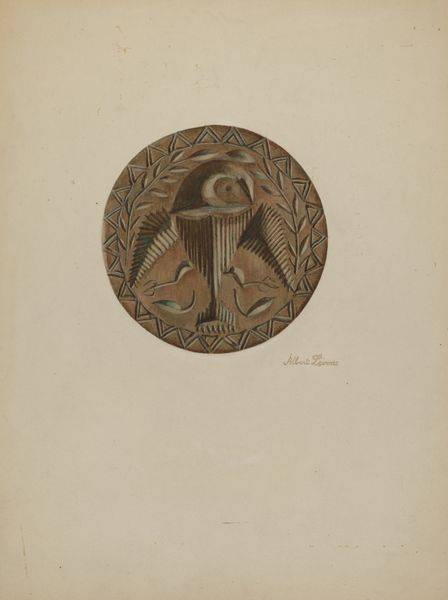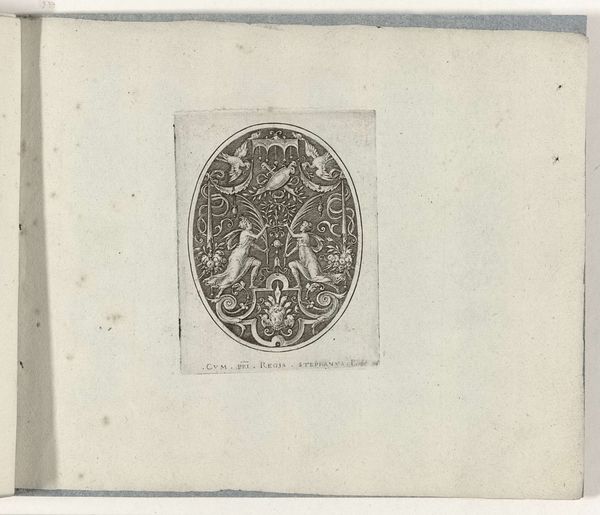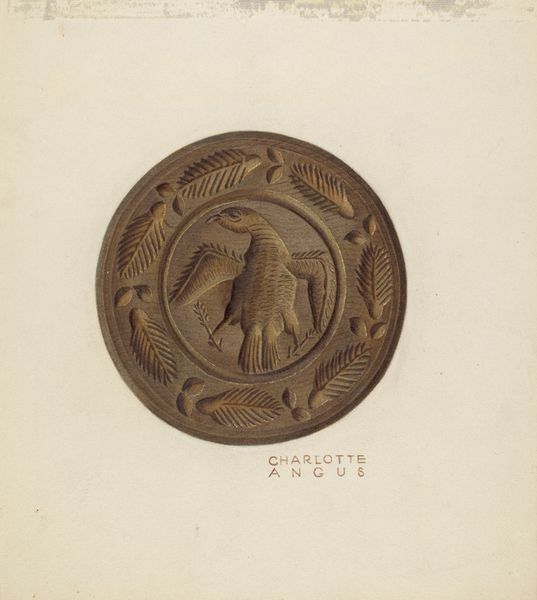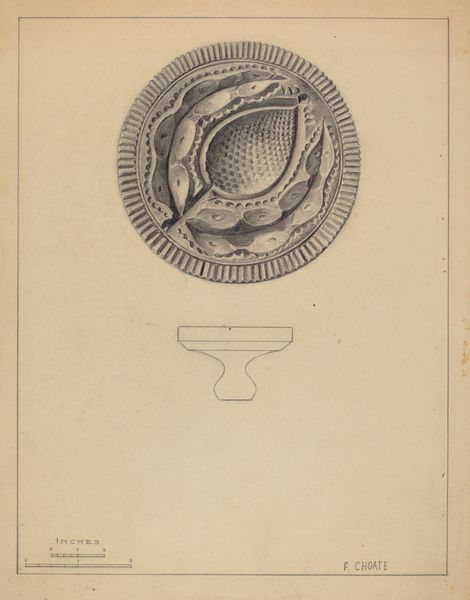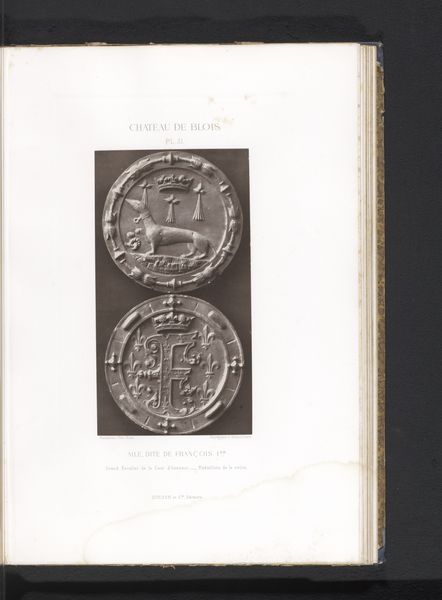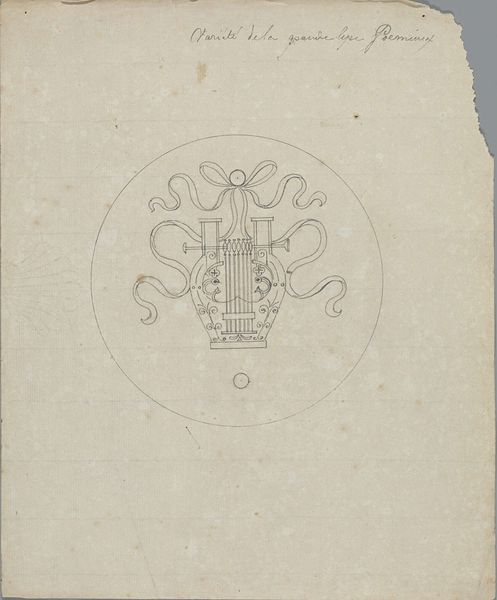
drawing, paper, pencil
#
drawing
#
narrative-art
#
paper
#
geometric
#
pencil
Copyright: National Gallery of Art: CC0 1.0
Curator: This pencil drawing, dated around 1939, is entitled "Glass Tray". It was created by Henry Moran. The medium is paper, showing a scene within a circular border suggesting a tray or platter. Editor: It's fascinating! There’s an oddly pastoral yet also urgent quality to it. A horse-drawn cart filled with people being pursued. The entire thing is rendered with so much delicate detail but I get a feeling of unsettled motion from it, as if things are about to fall off this perfectly symmetrical tray. Curator: Yes, I agree. Considering the socio-political landscape of the time, the drawing can be viewed in dialogue with the art and industrial design relationship that developed in the late 1930s. This interest in glasswork, particularly decorative items, gained momentum when it became a recognized form of art and craftsmanship within American studios, in the midst of a world struggling for progress, but held back by wars. Editor: And the way the pursuit is depicted… It's all suggestion and shadow. You don’t see the pursuers faces, you just understand they exist through the looming train behind the cart. There's definitely a sinister quality playing out against that geometric order you mention. Curator: And the presence of the train in pursuit perhaps alludes to progress barreling towards the past or people seeking freedom in a modern, progressive America. It presents a stark dichotomy of advancement versus traditional life, framed within a domestic object. It highlights this era’s dialogue of domesticity, progress, and even underlying anxiety within modernizing nations. Editor: Absolutely. It's compelling how such an unassuming form like a glass tray design becomes a stage for socio-economic narratives. This is about who gets to sit at the table and on what terms they get to build. I appreciate how it makes me rethink the intended uses—a celebration but simultaneously also maybe, a silent memorial or statement. Curator: It leaves me reflecting on how mundane objects such as a glass tray, were and still remain carriers of complex narratives of their time. The intention matters, and whether these are decorative objects, that function to give a domestic sphere cultural context that reveals underlying themes. Editor: Exactly. This piece proves even design can never escape the echoes of our history or, more importantly, the ongoing stories we're trying to shape in the present.
Comments
No comments
Be the first to comment and join the conversation on the ultimate creative platform.
